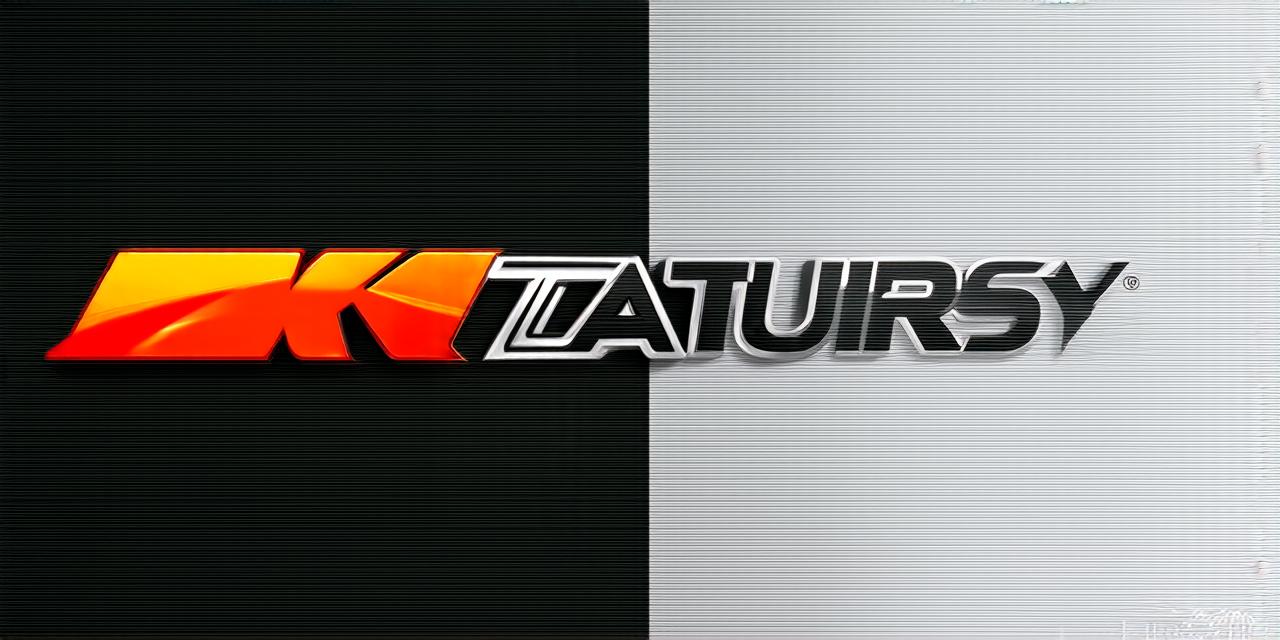A business logo is more than just an image or symbol that represents your brand. It’s a crucial element of your company’s identity that helps you stand out in a crowded market and connect with your customers on an emotional level. In this guide, we will explore everything you need to know about creating a business logo that resonates with your target audience and helps you achieve your marketing goals.
Understanding the Importance of Logo Design
The importance of logo design cannot be overstated. A well-designed logo can help you establish a strong brand identity, create a lasting impression on your customers, and differentiate yourself from your competitors. According to a study by Nielsen Norman Group, people remember logos more than they remember words or other visual elements.
Why Do You Need a Business Logo?
A business logo serves several purposes. It helps you establish a strong brand identity, creates a lasting impression on your customers, and differentiates you from your competitors. Here are some reasons why you need a business logo:
- Establishing Brand Identity: Your logo is the visual representation of your brand. It communicates your company’s values, mission, and personality to your target audience.
- Differentiating Yourself from Competitors: Your logo can help you differentiate yourself from your competitors. When people see your logo, they should be able to distinguish it from other logos in the same industry.
- Creating a Lasting Impression: A well-designed logo can create a lasting impression on your customers. It can help them remember your brand and associate it with positive emotions such as trust, reliability, and professionalism.
- Building Customer Loyalty: Your logo can help you build customer loyalty by establishing a strong emotional connection between your customers and your brand.
The Elements of a Great Business Logo
A great business logo has several key elements that make it effective in communicating your brand message and connecting with your target audience. Here are some elements that you should consider when creating your business logo:

- Simplicity: A great business logo is simple and easy to remember. It should be designed using clean lines and a limited color palette, which makes it easier for people to recognize it and associate it with your brand.
- Timelessness: Your business logo should be timeless, meaning that it will still look relevant and effective in 10 or 20 years. Avoid using trends or pop culture references that might become outdated quickly.
- Versatility: A great business logo is versatile and can be used on a variety of mediums, including print, digital, and merchandise. It should look good in black and white as well as in color, and it should be scalable to different sizes.
- Relevance: Your business logo should be relevant to your industry and target audience. It should communicate your brand values and mission, and it should be easily recognizable to people in your target market.
- Memorable: A great business logo is memorable and easy to recall. It should evoke positive emotions and associations, and it should stand out from other logos in the same industry.
Case Studies of Successful Business Logo Designs
There are countless examples of successful business logo designs that have helped companies establish strong brand identities and achieve their marketing goals. Here are a few case studies of successful business logo designs:
- Nike: Nike’s logo is an iconic design that has been around since 1964. It features the company name written in a simple, bold font, with an arrow pointing forward to suggest motion and speed. The logo has become synonymous with athleticism, performance, and success.
- Coca-Cola: Coca-Cola’s logo is one of the most recognizable logos in the world, with over 1.5 billion people around the globe drinking their products every day. The logo features a bold red and white color scheme, with the company name written in a playful font that evokes happiness and nostalgia.
- McDonald’s: McDonald’s logo is a simple design that features the company’s name written in a bold, sans-serif font, with two golden arches intersecting above it. The logo has become synonymous with fast food and convenience, and it has helped McDonald’s establish a strong global brand identity.
- Apple: Apple’s logo is an iconic design that features the company’s name written in a bold, sans-serif font, with an apple symbol inside the letter “a”. The logo has become synonymous with innovation, creativity, and quality, and it has helped Apple establish a strong brand identity that resonates with its target audience.
Creating Your Business Logo: A Step-by-Step Guide
Now that you understand the importance of logo design and the key elements of a great business logo, let’s explore how to create your own business logo. Here is a step-by-step guide to creating your business logo:
- Define Your Brand Identity: Before you start designing your business logo, it’s important to define your brand identity. This includes understanding your target audience, your values and mission, and your unique selling proposition (USP). By defining your brand identity upfront, you can create a logo that accurately represents your company and resonates with your target audience.
- Research Your Industry: It’s also important to research your industry to see what logos are already out there. This will help you avoid designing a logo that is too similar to others in the same industry, which could make it difficult for people to remember or distinguish it from other logos.
- Sketch and Brainstorm: Once you have defined your brand identity and researched your industry, start sketching and brainstorming ideas for your business logo. Use a variety of mediums, such as paper, digital tools, and whiteboards, to come up with different concepts. Don’t be afraid to think outside the box and try new things.
- Refine Your Design: Once you have settled on a few design concepts, start refining them to make them more polished and effective. This might involve adjusting the colors, fonts, or overall composition of your logo. It’s important to work with a designer who has experience in creating logos and can help you make these adjustments.
- Test Your Logo: Finally, test your logo with your target audience to see how well it resonates with them. You can do this through surveys, focus groups, or A/B testing different versions of your logo. Make sure that your logo is easily recognizable and memorable, and that it accurately represents your brand identity.
FAQs
What are the best colors for a business logo?
The best colors for a business logo depend on your industry, target audience, and brand values. Generally, bright and bold colors like red, blue, and yellow are associated with energy and excitement, while more subdued colors like green, brown, and gray are associated with stability and reliability. You can also use complementary colors to create a harmonious color scheme that evokes the emotions you want your logo to convey.
What fonts should I use for my business logo?
The fonts you use for your business logo should be easy to read and consistent with your brand values. Sans-serif fonts like Helvetica, Arial, and Calibri are popular choices for logos because they are clean and modern, while serif fonts like Times New Roman and Garamond can be more traditional and elegant.
Should I use an icon or a wordmark in my business logo?
Whether you should use an icon or a wordmark in your business logo depends on your brand identity and the nature of your business. A wordmark is a logotype that uses the company name as the logo, while an icon is a symbol that represents the company without using text.


